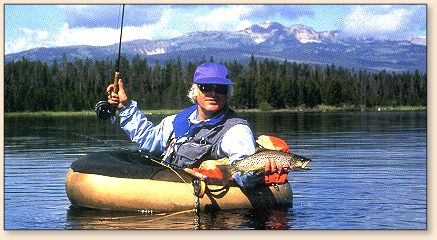
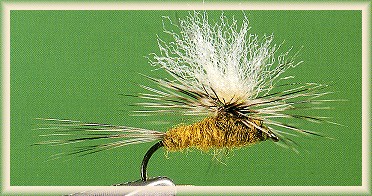 |
|
Olive Gulper Special
|
|
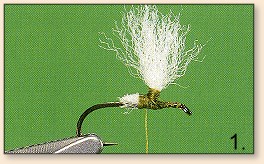 1. Fix hook in vise and layer front half with thread. Cut a segment of Polypro yarn, measure it the length of the shank, and tie it in about one-third of the shank length behind the eye. Cut the butts on a slant. Take several turns of thread in front of the wing to prop it up, and several more up the base to stiffen it. Place a drop of head cement on the base.
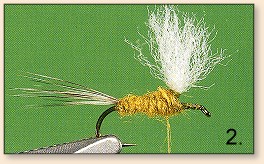 2. Make a slight thread bump at the bend of the hook. Measure a substantial bunch of stiff grizzly hackle fibers the length of the hook, and tie them in at the bend. Use thread turns against the bump to splay them slightly. Twist dubbing to the thread and wind a tapered body forward to the wing base.
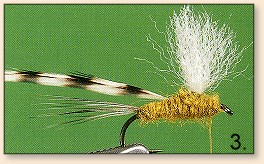 3. Select a hackle with fibers two to 2 1/2 hook-gaps long. Remove fuzz from the lower end of the stem, and tie it in by the stem with the shiny side up. Standard procedure is to tie a parachute hackle in on the far side of the wing, and to wind it counterclockwise. Taper dubbing the rest of the way down to the hook eye.
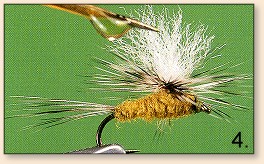 4. Wind four or five turns of hackle counter-clockwise around the wing post. Tie it off by placing the hackle tip over the hook shank just behind the eye. Follow the tip with two or three turns of thread. The thread lies in the same direction as the hackle, and draws it right rather than loosening it. Clip the excess tip, take several turns of thread to form a neat thread head, and whip-finish the fly. Place a drop of head cement on the base of the wingpost to secure the hackle. ~ Dave Hughes
|
|
Credits: From Dave Hughes book, Matching
Mayflies, published by Frank Amato Publications.
|
|
|
